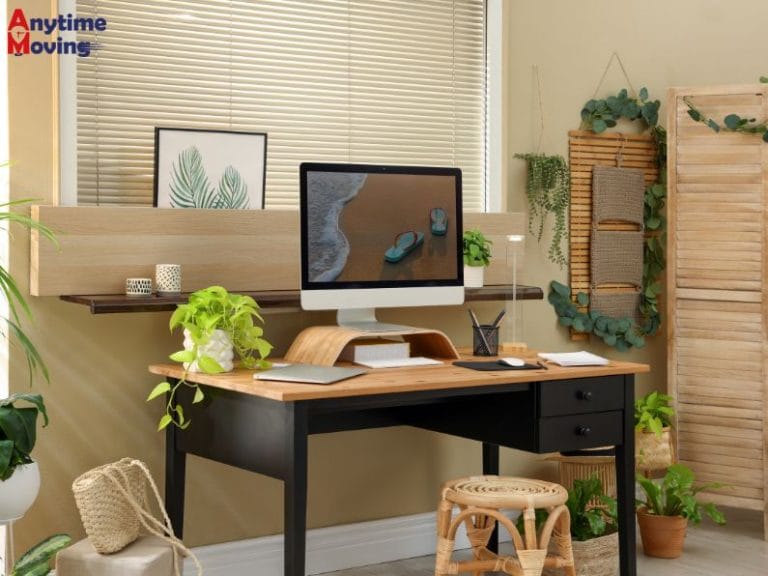Moving can be complicated and stressful, especially when dealing with fragile electronics like your computer monitor. Knowing just how to pack a monitor for moving is important because any incorrect move will lead to expensive damage. All you have to do is some planning in advance and use proper techniques; then, your monitor will make it to the new house in good shape. This guide will take you through the steps involved in packing a monitor for moving in safety and efficiency. Both office moving company in Vancouver and residential moves involve moving monitors and we are here to cover all the things you need to know about how to transport and ship a monitor.
Step 1: Gather Your Packing Supplies
Before starting, make sure you have the following items:
- Original box and packaging (if available)
- Sturdy box slightly larger than your monitor
- Bubble wrap or foam sheets
- Packing paper or towels
- Packing tape
- Scissors
- Labels and markers
The original box and packaging are your best options for preparing your monitor because it had been designed to fit the device and keep it safe, while a sturdy box with high padding will work just as well.
Having all packing materials at hand will ensure easier packing and less chance for damages. Ensure that materials are cleaned and free of any debris.
Step 2: Prepare Your Monitor
- Power Down and Unplug: Switch off your monitor and disconnect all the cables. Ensure that you take out the power cord, HDMI cable, and other connectors. These steps prevent electrical hazards and make the handling of monitors easier.
- Organize and Label Cables: Organize the cables by arranging them with zip ties or twist ties, and label them for ease of use later on in setup. By doing this, you will not have to fiddle around, trying to determine which cable goes in which place when you go to set up your monitor again.
- Clean the Screen: Gently wipe the screen with a soft, dry cloth to remove dust or fingerprints. This prevents smudges or debris from causing scratches during the move.
Attention to detail in preparation will save a lot of time and energy afterward and ensure that your monitor is ready for immediate use.

Step 3: Remove the Stand (If Applicable)
Many monitors come with detachable stands. Removing the stand can help the monitor be easier to box and less likely to take damage. Check your monitor’s manual for safe removal of the stand. Once removed:
Wrap the Stand Separately: The stand should be wrapped with bubble wrap or foam sheets. Secure it with packing tape so that it does not move around.
Label the Wrapped Stand: This helps you identify it much quicker at unpacking and guarantees you that no parts will get missing in the process.
Packing the stand separately reduces not only the weight of the monitor but also protects both components against possible damage in transit.
Step 4: Protect the Screen
The screen is the most fragile part of your monitor; therefore, protecting it’s very important. Moving companies in Vancouver know how to pack and move monitors and can help you a lot, still you can go for these steps to protect the screen:
- Use a Cardboard Shield: Cut a piece of tough cardboard, larger than the screen, and place it over the front. Secure it with tape, avoiding direct contact with the screen itself. This shield provides the first line of defense against accidental impacts.
- Wrap with Bubble Wrap: Wrap the monitor completely in a generous layer of bubble wrap, with extra attention to the screen area. Secure it with packing tape. The bubble wrap is used almost like a shock absorber in case any jolts may happen during transport.
- Add Extra Padding: Put sheets of foam, towels, or packing paper around the wrapped monitor for extra padding. Extra padding ensures that in case the box shifts, the monitor will be safe.
Step 5: Box the Monitor
Choose the Right Box: Choose a box that is heavier and slightly larger than your already-wrapped monitor. It should be big enough to accommodate padding on all sides. A well-fitting box will prevent extra movement during transit.
Add a Cushion: The bottom of the box is lined with crumpled packaging paper, foam peanuts, or towels to provide a soft base. This then absorbs any vibration and lessens the impacting force.
Place the Monitor: Put the wrapped monitor upright in the box. Avoid laying it flat, as this can increase stress on the screen. Keeping it upright reduces pressure on the screen and frame.
Fill with Packing Materials: Additional packing materials should be used in the case to fill up any empty spaces and provide more protection against the moving of the monitor. The tighter the better; this will prevent damage due to jostling or impacts.
Seal the Box: The box should be sealed with packing tape firmly. Reinforce the seams for extra safety. Apply the tape evenly so that the box doesn’t open up anytime.
Step 6: Label and Load
Label the Box: Mark the box with “FRAGILE” and “THIS SIDE UP” to warn movers to handle it with care. You can further instruct by adding words like “Delicate Electronics.”.
Place Strategically in the Vehicle: Set the box upright in a stable position, surrounded by soft items like pillows or blankets. Avoid placing it near the edges of the vehicle where it might shift.
Careful placement means your monitor is secure in transit and minimizes the chance of any damage.
Additional Tips
- Avoid Stacking Heavy Items: Do not stack heavy items on top of the monitor box, as this can cause pressure and damage.
- Transport in a Car: If possible, transport your monitor in your car rather than a moving truck for added safety. Personal handling reduces the risk of mishandling by others.
- Pack Monitors Separately: If you have multiple monitors, pack each one in its own box to prevent them from damaging each other. Separate packing ensures no scratches or screen damage from contact.
- Explore Useful Moving Resources: For tools like moving checklists and address change assistance, visit MovingWaldo to streamline your relocation.
Final Thoughts
Packing a monitor to move doesn’t have to be such an overwhelming task. Equipped with these steps and the time to gather the appropriate supplies, your valuable equipment will be secured, and you save yourself from a lot of headache. Remember, careful preparation now can save you from costly repairs or replacements later. If it becomes a bother, there you can hire professional electronic movers or a reputable residential moving company in Vancouver that will ensure everything in your new home arrives safely.
That little extra effort will go a long way in protecting your investments and ensuring a seamless transition into your new space.
FAQ
Can I pack a computer monitor in checked luggage?
Yes, you can pack a computer monitor in checked luggage, but it’s risky due to potential rough handling. To minimize damage:
- Wrap the monitor securely with bubble wrap or foam.
- Use a sturdy box with adequate padding on all sides.
- Clearly label the box as “FRAGILE” and “HANDLE WITH CARE.”
Whenever possible, it’s safer to carry your monitor as hand luggage to maintain control during transit.
How long does it take people to unpack after moving?
Unpacking can take anywhere from a few hours to several weeks, depending on preparation and organization. To unpack faster:
- Label all boxes clearly for easy identification.
- Prioritize essential items like electronics, kitchenware, and bedding.
- Use a checklist to track progress and avoid delays.
How to transport a monitor safely?
To transport a monitor safely:
- Remove the stand and wrap the monitor in bubble wrap, focusing on the screen area.
- Use a sturdy box with additional padding, keeping the monitor upright.
- Secure it in the vehicle surrounded by soft items to prevent shifting.
For long-distance moves, consider professional packing services for added protection.
How to ship a monitor without damage?
Shipping a monitor safely requires:
- Using the original packaging or a well-padded box designed for monitors.
- Adding a cardboard shield over the screen for impact resistance.
- Filling empty spaces with foam peanuts or towels to prevent movement.
What are the best practices for packing a monitor for moving?
For added convenience and professional handling of your electronics, consider contacting Anytime Moving. Their experienced movers ensure your valuable items are packed and transported safely with their Packing & Unpacking Services designed to make your move hassle-free.





